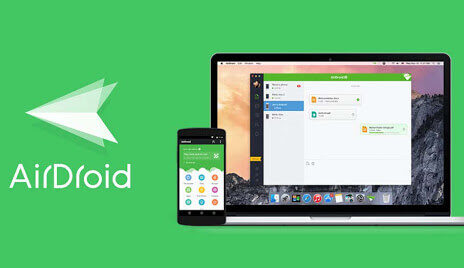Previously, mobile apps were only known for facilitating sales. Now, the whole buying decision takes input from internet-supported devices. And out of these devices, mobiles are the most popular. This marketing trend prompts businesses to create user experiences that are pleasantly memorable, giving them another reason to go ahead with the buying decision.
Every business wants its app to stand out from the crowd. This way, they get a higher chance of completed sales, satisfied customers, repeat business, and referrals. However, only a few businesses succeed at making an impact on their target clientele through their apps.
Why is it so? What factors in the app development process can turn a one-time customer into a regular one? Surely, the answer lies in the unique and purposeful mobile experience of these businesses’ apps.
In fact, getting impactful UX design is so important for businesses that they should hire Android app developers based on the service provider’s competence in this skill. You will find that a quality development service provider will always keep the following factors in mind when developing the perfect layout for your app.
Customer Research
Your developer will look at the app from the viewpoint of a marketer. He will study the psychology of your customers while they interact with your business. He should understand the interaction time, its purpose, and the emotions behind it to develop the design they would like to see.
This information will impact the extent of information presented on the screen as well as the options that will be made available. It will also determine when and how to tackle those users who are ready to exit the app.
Understanding Customer Demographics
An intelligent UX designer will go beyond psychology to understand customers’ needs. They will understand the device most used by the business’s current and potential customers. This choice of device is important for several reasons.
First, users’ interaction with their devices changes with the device’s nature. Most interaction research is available for mobile users. Mobile users prefer to hold their devices in one or both hands. Accordingly, the developer must keep the buttons and menu in the thumb zone specific to these users. Tablet users will need different positioning of these buttons as they like to keep their operations hands-free.
Secondly, the screen size will determine the position, size, and distance of touch targets. It will also define the borders and white spaces on the app.
Choice of Browser
The customer research should pinpoint customers’ most loved mobile browsers. Developers will use this data to make the app suitable for a particular browser while adjusting its features to make room for other browsers as well.
Keeping the Interface Clean
Research is the foundational work of developing an app that leaves a lasting impression on the users. Upon this research, the designer will utilize his skills to keep the interface as intuitive as possible.
One key factor in keeping the interaction easy and straightforward is keeping the features as minimalistic as possible. The developer’s job is to bridge the gap between the marketer and the customer. He does so by minimizing the number of decisions the customers must make on the app interface. It may also mean giving suggestions of relevant products and features where applicable. But in most cases, minimizing the information equals ease of interaction and faster purchase decisions.
Interactivity
The app should be responsive and interactive to keep the customer engaged. UX designers include UI feedback features to give this illusion of interactivity. The feedback from the app can come in many ways, for example buffering signs, touch sounds, notification sounds, and vibrations.
These responses are also essential to prevent the users from running out of patience or considering abandoning the operation. In case of the absence of these responses, the users may feel that the app is not responding or the device has started acting up.
Accessibility
Accessibility has become a key concern for UX designers in recent days. This term simply means that apps should be easy to use for people with different abilities. For most apps, it simply means using bold, legible fonts. Still, other apps need to make their information available in voice as well as text form.
This feature of accessibility is becoming easy to provide thanks to the popularity of virtual assistance applications like Alexa and Google Assistant. Now, the app developers in Houston only have to integrate these assistants within their apps to let the users get a profound experience.
Sizing the App
Technological advancements have made it possible for users to enjoy commendable storage space on their devices. Add to it the liberty they get from cloud storage. But think of it: this storage space offers nothing in value if your RAM is running out of working space because of poor app choice.
Most users face the dilemma of keeping or deleting some apps because their device’s enormous storage is running out owing to the tens of apps they have installed. But if your business has to compete effectively, it must maintain its space on your customers’ devices. How can you encourage them to choose your app over others? The answer is simple: all you have to do is make light apps that don’t demand much storage space on your customers’ devices.
Allowing Gesture Support
Tapping on the screen could be a great idea if your app developer was giving many options to the users. But the quest for minimalistic and straightforward design has eliminated that possibility. Now, you can only offer a few options and allow wider choice with gesture support. Some key gestures offered by UX designers include swiping and pinching.
Offering Offline Functionality
Does your app offer entertainment, knowledge, or growth experiences? If yes, they may want to use the app even when the world around them has gone offline. Other apps that demand offline functionality include GPS tracking and health and fitness apps.
Managing Speed and Performance
It’s a no-brainer that the speed of your app impacts users’ experience. If your app lags often or keeps interrupting the users with ads and promotions, users will soon get annoyed by it. The same holds for those apps that ask too many but irrelevant questions.
Your app should be easy to launch and intuitive to navigate. The use of standard design helps as it’s predictable and easy to navigate. Businesses should always take time to hire Android developer who is experienced in development and quality control areas. These are the gems that can make interacting with the app a breeze, allowing customers to launch it again and again.
Take Away
This article talks about the key features that build or break customers’ trust and interest in your app. These are related to designing a winning user experience so they can explore your business and its functionality without limitations.
Designing a profound mobile experience starts with understanding your customers. This understanding will include the purpose for which the users will deploy the app, their devices, and their behavior around their devices. With this understanding in mind, your app developer will give the potential users what they demand from the app.
But all these efforts can go in vain if the developer forgets to smoothen up the experience with efficiency and high speed. Plus, you wouldn’t want your app to claim a lot of storage space on users’ devices, as this can prompt them to get rid of the app to save space.
For More Information read our Blog: The Convergence of Blockchain and App Development




